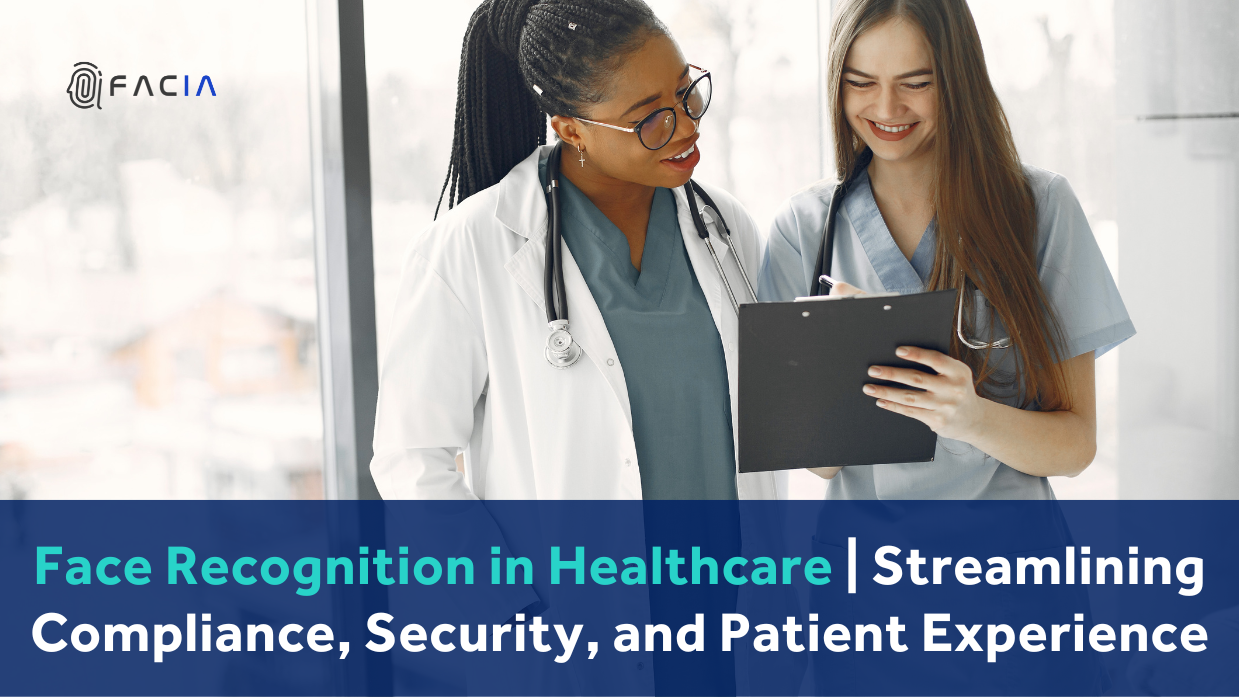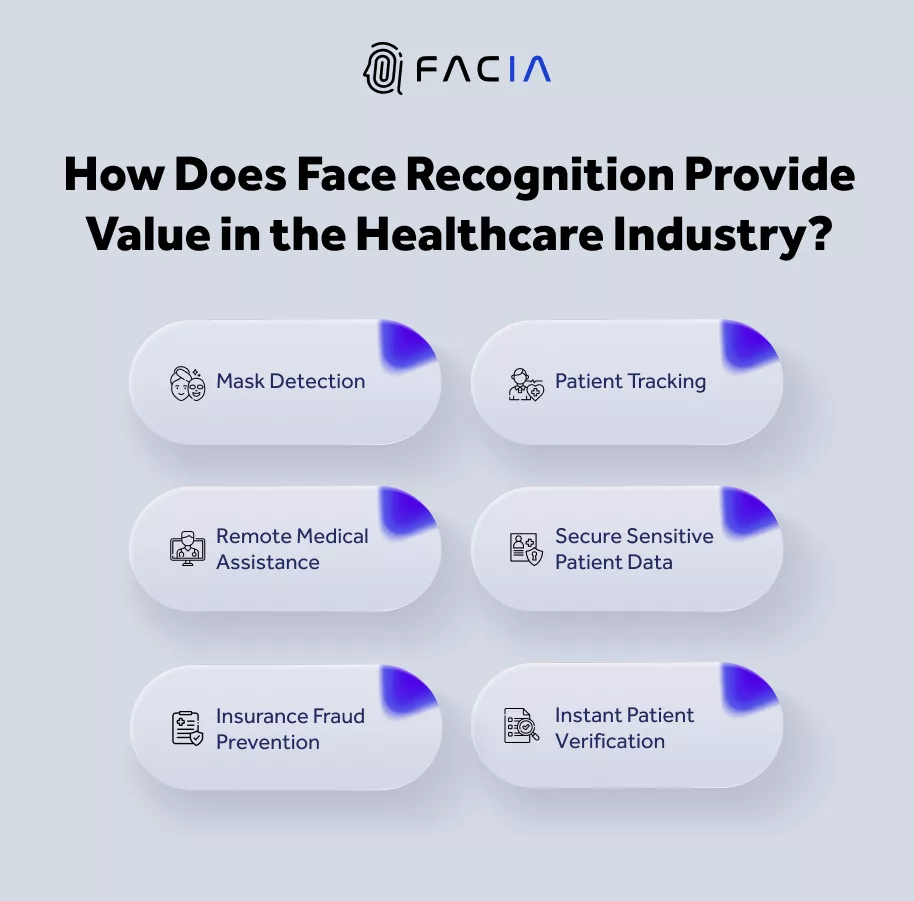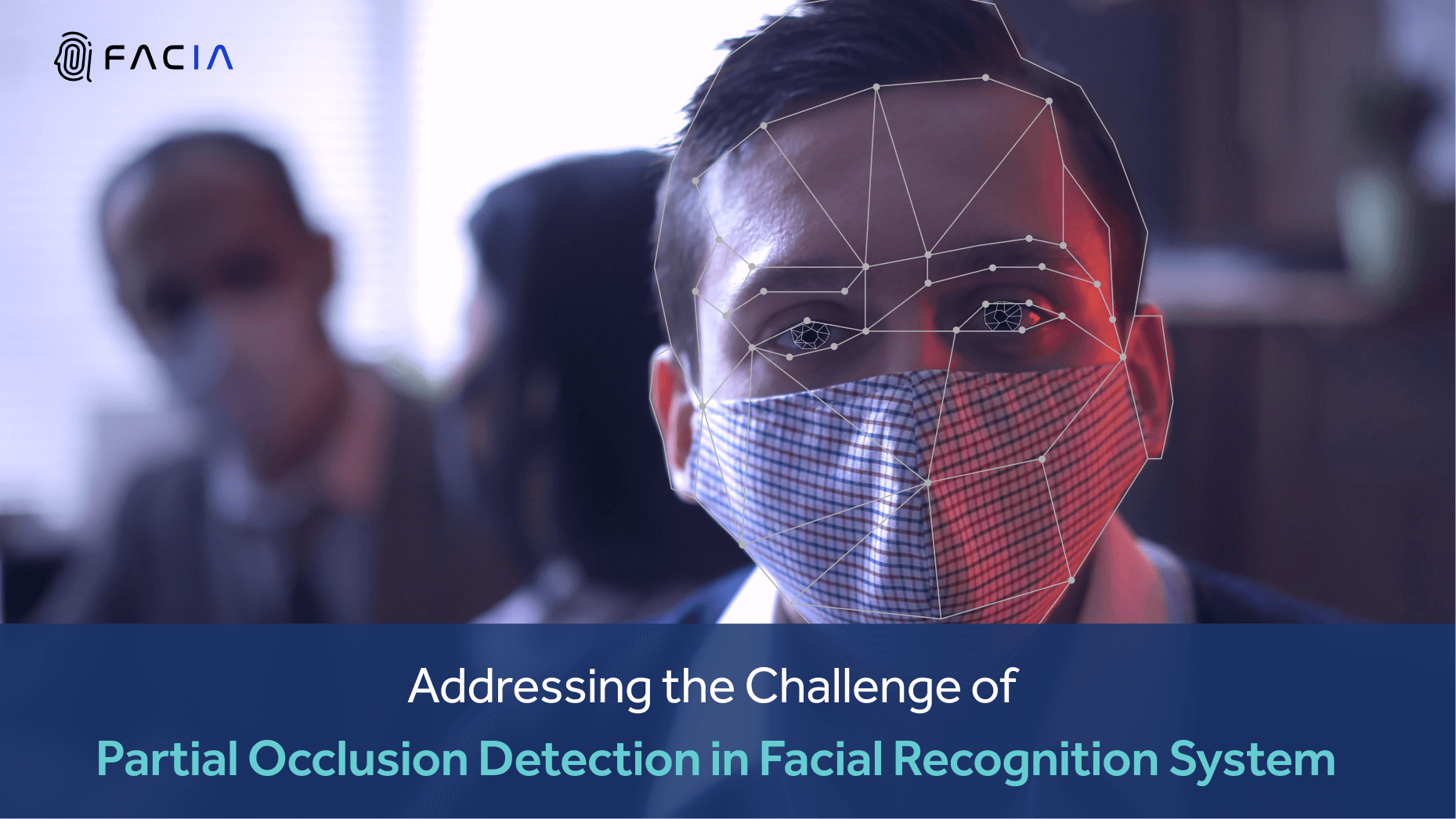
Face Recognition in Healthcare | Streamlining Compliance, Security, and Patient Experience
Author: Carter | 12 Dec 2023In This Post
Dependency on Artificial Intelligence (AI) is worth the effort as it’s difficult to interpret anything online without using technological advancements. The revolutionary power of face recognition in the healthcare sector can’t be underestimated, and it mustn’t be overstated, either. For many years, the role of digital technology in healthcare has immensely grown, leveraging sensors employed by patients and software used by organisations. By 2027, the market size of global facial recognition is anticipated to reach $12.92 billion with a CAGR of 14.8%.
Over the last decade, technology has improved by orders of magnitude that haven’t been expected, specifically in the healthcare sector.
Key Takeaways
- The healthcare industry is transforming by implementing AI-powered advanced technologies.
- Face recognition swiftly recognizes employees and reduces verification time.
- Assists in resolving multiple issues within seconds.
Let’s dive deeper into the blog to explore how cloud-computing technology is resolving issues in the healthcare industry.
How Does Face Recognition Serve Healthcare?
Face recognition potentially transforms the healthcare sector by simplifying patient verification, and administrative procedures, whilst improving security and data privacy measures. This also helps monitor patients, diagnose genetic disorders, and predict health-affecting indicators. Moreover, AI face recognition technology monitors employees’ performance and accurately tracks their attendance.
Face Recognition Improves Access to Patient Care
Healthcare experts can securely and swiftly access medical records by accurately recognising patients. The most significant impact of AI-powered technology can be seen in remote or rural areas that do not have access to medical experts in close proximity. The concept of telemedicine has gained popularity, so it’s evident that face recognition service providers now easily manage patients who can’t attend appointments physically. They record patient information virtually by using their facial attributes as a code, which helps them retain their history. AI-powered chatbots are used as virtual assistants that schedule patient appointments. This assists the medical staff and allows them to concentrate on more patients at a time.
Biometric Face Recognition Resolves Multiple Issues
This AI-powered technology informs medical experts how to complete a task or analysis to diagnose the patient and make the treatment decision. It also aids in evaluating massive datasets, investigating medical images, and taking measurements, which are critical features of facial recognition technology. Hence, it serves as a second hand for the medical experts, providing immense support to offload specific tasks and the associated mental drain. Professionals can efficiently complete tasks, make swift decisions, and offer hassle-free medical diagnoses.
Face recognition supports doctors in diagnosing the disease at its early stage, leading to better patient outcomes, lowering hospital costs, improving productivity, and making space for more patients. This is how AI helps to enhance the number of patients and make healthcare more proactive.
Medical professionals can use this cutting-edge technology to build risk prediction models and early detection algorithms using large amounts of medical history, patient records, and genetic information. Managing massive data requires consistent validation and an ethically based approach to advanced technology.

Prime Applications of Face Recognition Technology (FRT) in the Healthcare Industry
FRT in healthcare conveniently recognises and monitors patients to diagnose medical, genetic, or behavioural conditions. By 2027, AI face recognition is forecasted to reach $11.35 billion at a CAGR of 16.0%. The importance of data input, informed consent, effective communication about the potential impact on the patient-clinician relationship, and incidental findings are feature benefits of this advanced technology. User data privacy and protection are the primary concerns of hospitals that are achievable using FRT. Let’s move forward to understand a few applications in depth.
Seamless Patient Onboarding Verification
An important application of face recognition systems is patient verification. In traditional procedures, the potential for human errors is significant. Therefore, by using advanced technology, the misidentification can be minimised. Eliminating medical errors and improving accuracy ensures patients receive care relevant to their medical history.
This AI-powered software can improve patient and employee-sensitive data management along with security. Healthcare experts can swiftly access their medical records, reduce patient waiting times, and improve efficiency.
Efficiently Monitor and Detect Diseases
AI-powered technology plays a vital role in detecting and monitoring diseases. Few patient conditions reveal physical symptoms on their faces. FRT can quickly observe these changes, early signs of any deadly disease, and specific genetic conditions. Hence, this early diagnosis leads to better health outcomes.
FRT also tracks the improvement in patients’ health conditions over time. Moreover, this permits healthcare service providers to assess the quality of treatments and modify them accordingly.
Swiftly Asses Mental Health Condition
Face recognition promises to provide accuracy with mental health assessments. Patient facial attributes demonstrate their emotional distress, which smooths the process of analysing their mental condition. Also, it assists medical health experts in recognising and addressing issues more efficiently.
State-of-the-art technology aids in monitoring patient’s mood and their responses to treatments, leading to effective and more personalised care.
Conveniently Monitor Remote Patients
FRT has found its way into remote patient monitoring with the advent of telemedicine. Since the pandemic, home-based healthcare has been a growing trend, so this advanced technology steps in to authenticate patient identity in virtual appointments and ensure privacy and security.
Distant or house-bound patients who live far away from medical experts can now access quality healthcare. Facial recognition assists in patient diagnosis, monitoring, and making healthcare accessible.
How Did COVID-19 Intensified the Need for Face Recognition Technology?
Since the pandemic, face masks have been essential to people’s daily lives to protect themselves from deadly diseases. So, when individual security and safety were a priority, it was essential for firms to consider this advanced technology. However, these AI-powered systems can accurately detect faces behind masks. In 2021, 28% of patients stated that health is more important than privacy protection.
With the passage of time, privacy has also become a significant concern in this widespread enforcement of cloud-based technology. That’s why industrial standards for privacy have to be assessed depending on emerging concerns and needs, including securing one’s image.
Firms must understand their moral duty throughout the process to ethically and effectively enforce face recognition technology, from choosing the ongoing maintenance to proper utilisation of service providers. Patients should be confident that technology is trustworthy and is there for their safety and well-being.
In the upcoming years, the healthcare industry will not be the same. Face recognition technology will transform how medical experts operate within their firms, and how they care for firms. Everyone believes that AI will replace humans, but it won’t. Advanced technologies support employees to perform better and healthcare service providers to swiftly diagnose their disease without remembering their medical history. That’s how it works. In 2023, the healthcare industry’s global AI surpassed $187.95 billion.
How does Facia Assist in Revolutionising the Healthcare Industry?
Face recognition technology is improving and aims to transform the healthcare industry. Facia helps streamline patient identification and supports healthcare service providers to ensure consistent security checks. Also, it secures patient information, provides remote services, and reduces physical interactions. This cutting-edge technology eliminates the risk of data breaches whilst ensuring the accuracy of patient records.
The technology provides updated health records to hospitals and medical experts that save their time and maximise productivity. Moreover, FRT systems enhance the patient onboarding process and effectively record their entry and exit times.
Want to smooth your patient onboarding procedure? Don’t hesitate to avail our free trial now!
Frequently Asked Questions
A famous biometric software, “face recognition,” is used to quickly recognize and verify user facial imprints by examining and cross-matching with their legal documents.
A face recognition system compares current user images with those stored in a database. Facial recognition is used in different industries, such as healthcare, media, entertainment, marketing, and finance.
Advanced face recognition software captures a user's picture or makes a video of their faces. Then, translate the image data by highlighting their facial features. Afterward, algorithms compare this retrieved information with that stored in the database.
Face recognition is essential as it smooths the user onboarding process and instantly examines the patient's physical or mental condition, saving healthcare professionals' and patients' time.
Usually, face recognition technology depends upon face recognition software that requires considerable datasets to deliver accurate results.






